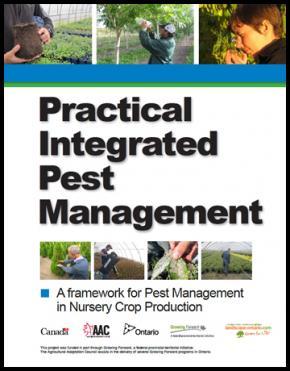Practical Integrated Pest Management
A framework for Pest Management in Nursery Crop Production
Integrated pest management (IPM) is a decision-making process that considers all available techniques in the effective, economical and ecologically sound management of pests. The main difference between conventional pest management and IPM is where you put your effort. Conventional pest management strives to control pests economically, with emphasis on cost-efficient treatments. While IPM is also concerned about the economics of pest management, it places a greater emphasis on understanding why pest outbreaks occur and finding sustainable solutions to those problems.
Manual features
This manual is designed to be accessible and functional. You will find features that will help you to implement IPM in a gradual and complete way. These features include:
- Checklists of Good, Better and Best IPM practices
- A scoring system used for self-assessment and tracking progress
- Short descriptions of each practice
- Thorough, concise and logical guidelines for practicing IPM in the nursery
Chapters:
- Prevention
- Monitoring pests and plants
- Identifying pests and other organisms
- Establishing thresholds for intervention
- Treating in an Integrated Pest Management Program
- Evaluating in an Integrated Pest Management Program
Download the manual here.
This project was funded in part through Growing Forward, a federal-provincial-territorial initiative.
The Agricultural Adaptation Council assists in the delivery of several Growing Forward programs in Ontario.
